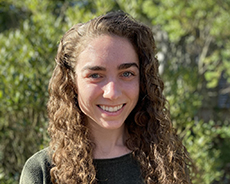Research
I use Parhyale hawaiensis, an amphipod crustacean, as a model to explore questions concerning the development, evolution, and physiology of arthropods. In order to characterize the expression of embryonic proteins with greater temporal and spatial resolution, I worked to establish the HaloTag fluorescent protein tagging system in Parhyale. Following the microinjection of various RNA constructs, I tracked the expression and localization of histone H2B and actin during the germ disc stage of embryonic development. Currently, I am using CRISPR-Cas9 mutagenesis to investigate the roles that patterning genes labial, notch, and delta play in segmenting the crustacean body.
Through a collaboration with the Rosenthal Lab, I am also working to understand the genetic mechanisms underlying circatidal rhythms. All organisms have internal clocks to predict environmental change, the best understood being the circadian clock. Other environmental variables are known to be tracked, such as the tides for marine animals; however, the molecular underpinnings of circatidal clocks are largely unknown. In order to functionally determine whether the circadian and circatidal clocks are distinct or share core components, I used CRISPR-Cas9 to knock out the circadian clock genes clk, per, and cry2 in Parhyale. I am now in the process of generating and raising homozygous gene knockout strains for these genes. Ongoing studies by our collaborators at UMass Chan Medical School are entraining Parhyale to artificial tidal cycles and assessing whether tidal behaviors are affected by circadian gene knockouts.
About Me
I am originally from Easton, MA. I first became interested in evo-devo from reading the book, Your Inner Fish by Neil Shubin in high school. The idea that we can explore the evolution of animals by studying ancient, conserved developmental plans was deeply captivating. Consequently, at Cornell University, I majored in Biological Sciences with a concentration in Genetics, Genomics, and Development and minored in Music. While there, I worked in Dr. Robert Reed’s lab where I used CRISPR-Cas9 to probe the genomic architecture contributing to eyespot development and phenotypic plasticity in the wings of butterfly Junonia coenia. Within Cornell’s music department, I played guitar in the improvisation ensemble and performed an electronic composition in which I converted the genomic sequence of the SARSCoV2 coronavirus into MIDI notes. In my free time, I enjoy listening to lots of new and old music, as well as exploring electronic, rock, and Latin styles in my own productions.


